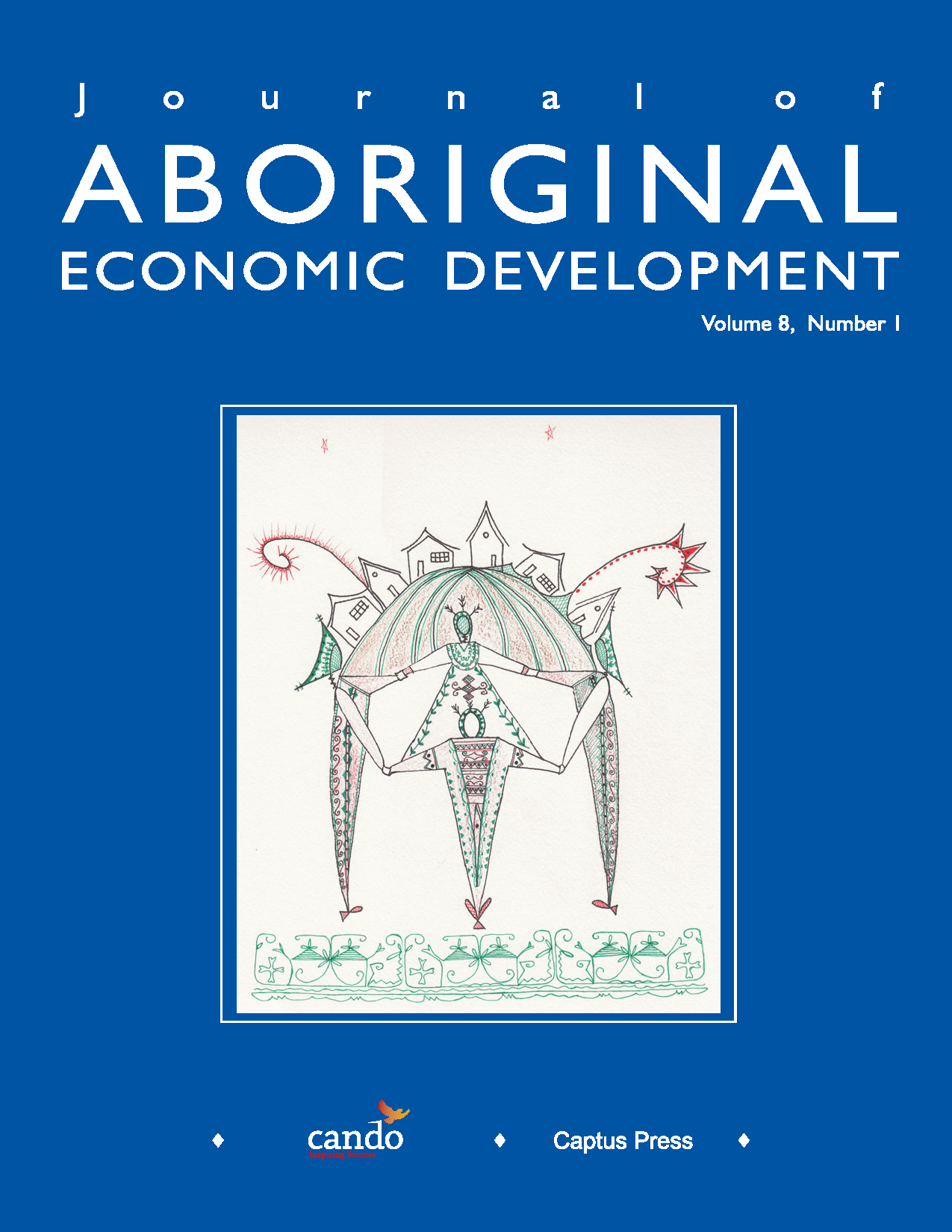Alternative Approaches To Hydro Compensation And Agreements With First Nations: Manitoba and Quebec
DOI:
https://doi.org/10.29173/jaed318Keywords:
Agreements, Alternative approaches, Business And Economics, Compensation, Cree people, Cultural heritage, Dam construction, Dams, Economic development, Employment, Equity, Ethnic Interests, Flood damage, Forestry, Indigenous peoples, Mining, Native North Americans, Negotiations, Ownership, Settlements & damagesAbstract
This paper outlines the workings of two quite different contemporary approaches to settlements and agreements with First Nations by hydro companies and governments involved in hydro dam construction. The first is the equity approach used by Manitoba Hydro in negotiations with the Nisichawayasikh Cree Nation (NCN) in which the First nation is effectively offered joint ownership of the dam and a share in future income streams and in employment and construction benefits. The second approach is that by the James Bay Cree of northern Quebec who eschew dam ownership, instead negotiating an annual share in revenues generated by hydro, forestry and mining. Both approaches constitute major improvements over disastrous earlier approaches which can be summarized as 'flood now and talk later', but they carry quite different economic. Political and governmental terms as well as quite different potential benefits and risks. This paper examines the background behind each deal and the way in which they operate. It concludes by arguing that each deal was conditioned by circumstances and history. There is, however, clear merit in Aboriginal People seeking to secure maximum control over and benefit from all sources of economic development on their traditional lands.
Downloads
References
Bacher, John and Danny Beaton, Undated, ‘A Cree Woman in Defence of Mother Earth’, .
Braun, Will, 2011, ‘Canada’s Coming $50 billion Hydro Boom Brings Environmental Perils Too’, This Magazine, 07/09, .
Eenou-Eeyou Limited Partnership, Annual Report, 2008–2009.
Freylejer, Leandro. 2009. ‘The Social and Economic [Under] Development of Northern Manitoba Communities Over the Past Two and a Half Decades’. Paper Submitted to the Manitoba Research Alliance for Transforming Inner-Cities and Aboriginal Communities, Canadian Centre For Policy Alternatives — Manitoba. Mimeo.
June 4.
Hultin, D. 2004. ‘New Partnerships in Hydro Development’. Winnipeg: Manitoba Research Alliance on CED in the New Economy. At .
Kulchyski, Peter. 2004. ‘È-nakàskakowaàhk (A Step Back): Cree Nation and The Wuskwatim Project’, Canadian Centre for Policy Alternatives Review, May.
Kulchyski, Peter., 2005. ‘Peter Kulchyski Responds’. Canadian Dimension, January–February.
Loxley, John, 2010, Aboriginal, Northern and Community Economic Development. Papers and Retrospectives. Arbeiter Ring, Winnipeg.
Manitoba Hydro, 2010, Annual Report, 2010, Winnipeg.
Mennonite Central Committee, 2011, Critique of comments in Free Press, http://energyjustice.mcc.org/views/commentary/mediaresponseNisichawayasikh Cree Nation. 2010a. ATEC. At .
Nisichawayasikh Cree Nation. 2010b. Urban Reserve. At .
Nisichawayasikh Cree Nation. 2010c. Nisichawayasikh Cree Nation Trust Office. At .
Owen, Bruce, ‘A dam-fine future: Co-operating with affected First Nations means projects seen as blessing rather than blight’, Winnipeg Free Press, June 25, 2011, page A6
Primrose, Jerry and W. Elvis Thomas. 2005. ‘Debating the Wuskwatim Hydroelectric Deal’. Canadian Dimension, January–February.
Quebec Government and Grand Council of the Cree, 2002, ‘Agreement Concerning a New Relationship’, Peace of the Brave or Paix des Braves. Quebec City.
Quebec Government, 2011, Expenditure Budget, Vol. III, 2011–2012, Quebec City.
Quebec Statistics, 2010, DataBank of Official Statistics on Quebec, Total exports of natural resources, energy, mines and forests, Quebec and Canada ($ M) (July 23, 2010). At <http://www.bdso.gouv.qc.ca/pls/ken/Ken263_Liste_Reslt.p_tratr_resltp_iden_tran=REPERZ3PZYJ5816626968956*7$cW&p_modi_url=0206110018&p_id_rapp=1925>.
United Nations Environment Programme (UNEP), 2007, ‘Hydro-Quebec’s approach on partnership with aboriginal communities: The Minashtuk Project’, United Nations Environment Programme: Dams and Development Project. At <http://www.unep.org/dams/documents/ell.asp?story_id=127>.
Waldram, James B. 1988. As Long as the Rivers Run: Hydroelectric Development and Native Communities in Western Canada. Winnipeg: University of Manitoba Press.
Weinberg, Bill, 2007, ‘Hydro-Colonialism advances in Canada’s far North: Cree Nation Divided Over James Bay Mega-Project’, Indian Country Today, .
Downloads
Published
Issue
Section
License
Copyright (c) 2012 Cando

This work is licensed under a Creative Commons Attribution-NonCommercial-NoDerivatives 4.0 International License.




